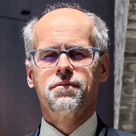
Fernand Reinig
CEO of Luxembourg Institute of Science & Technology
Education & Research / Luxembourg
“Our research has earned us interest from NASA”
The Luxembourg Institute of Science and Technology (LIST) has pioneered developments in nanomaterial instrumentation that are being used for the space industry. Fernand Reinig, CEO of LIST, explains how Luxembourg is enabling innovation in science and research that will help us all better understand the mysteries of space.
Can you give us an overview of the public & private research landscape in Luxembourg?
Public research activities in Luxembourg started only in the late 80’s with the creation of the Centres de Recherche Publics (CRPs) that were launched even before the creation of Luxembourg Univeristy, which is a very particular situation. Before that, we had quite a dynamic sector of RDI led by the private sector: the Goodyear innovation center has existed in Luxembourg since the 1960’s, and we also have companies like Arcelor MIttal which have their own research capacities. In the 1980’s, European governments started to realize that innovation is a key success factor to help with the diversification of an economy and to help build a modern one. Luxembourg at that time was just coming out of the steel crisis in the 1970’s, and the public consent was to think about the future and invest in education and research. Therefore, we started with the creation of three CRPs, and then gained speed through the creation of the National Research Fund in 1999, followed by the creation of Luxembourg University in 2003. Since then, we have heightened our credibility and achieved international recognition. Luxembourg University now ranks in the top 200 universities globally and among the very best young universities in the world.
Where does LIST fit in this landscape?
LIST emerged from the merger of the former “Tudor” and “Lippmann” research institutes, and was created in 2015. We now have 600 people, making us the second most important public research sector player after Luxembourg University. Our activities focus on three thematic fields: one is centered around new materials, nano-materials, composites and bio-composites; then we have a cluster concerning environmental technologies with green technologies, as well as earth observation, space-naval technologies and so forth; and lastly we have a cluster for IT, specifically as an enabler and added-value tool for increasing competitiveness in organisations.
Can you give us some examples of innovations being made in Luxembourg?
We have developed miniaturized equipment that we can be put on microscopes, providing super-high resolution. This equipment is applicable for use in the space industry, and, in this regard, our research has earned us interest from NASA, as well as a Japanese space company planning a mission to the moon. The Japanese are making robotic space rovers to harvest lunar water and they are planning to add LIST-made spectrometers as backpacks to their robots in order to allow them to “see” – in the sense that our spectrometers will allow for detailed on-location material analysis. All together we have over a dozen running space projects at LIST.
To what extent are you working to promote further cooperation with other international research players?
Today, we have more and more international collaborations via a framework of European projects, which also help to make us more visible. We have more projects with American institutes financed by national finance foundations. Competition for these projects is quite high. However, with our American partners, we have managed to get through the filter and obtain funding from national research foundations. In addition to our growing international cooperation, the Luxembourgish government has agreed to put more on the table over the last 20 years, which is not at all the case in all countries. This makes Luxembourg very attractive for international scientists and researchers: not only do they get their paid well, but they also benefit from a certain infrastructure level and equipment, as well as the possibility to build up a sophisticated team. We can see that these are convincing arguments in today’s research world.
